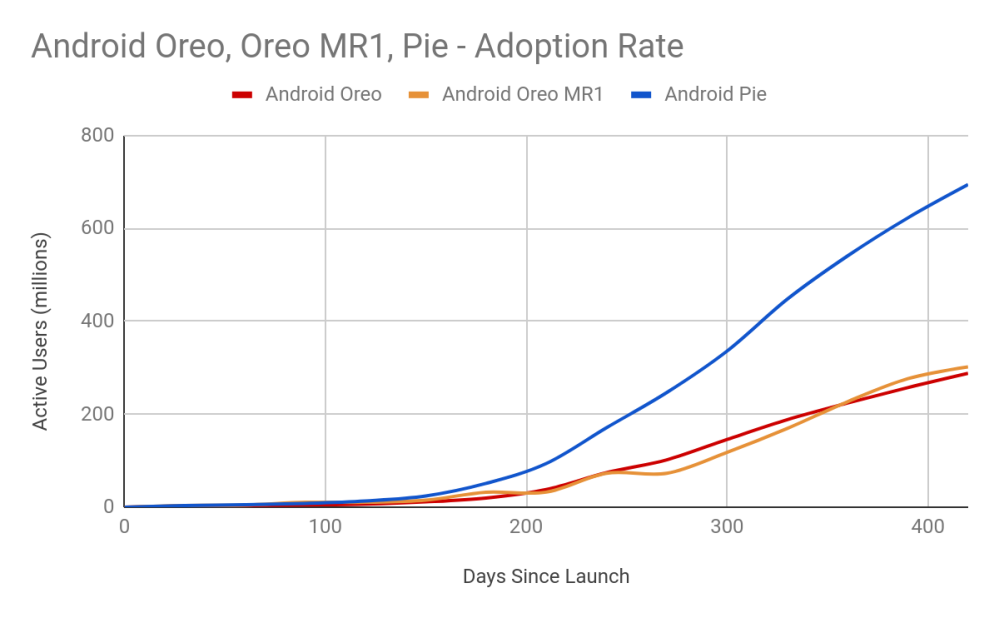
Last October, Google stoped providing Android distribution numbers on a consistent monthly basis. The last update was during I/O 2019 in May. Ahead of the 2019 Android Dev Summit, Google today shared a new stat that highlights Project Treble’s successful impact on Android updates.
With Project Treble, Google set out to help manufacturers quickly update devices by modularizing the operating system. Announced in 2017, the initiative shipped with Oreo and all succeeding versions of Android.
One measure of success that Google’s highlighted in the past is the Partner Beta Program for new releases. Instead of Google only testing the next version of Android on Pixels, the Pie Beta in 2018 saw a total of 7 device models from 7 OEMs
This year, there were 18 devices representing 12 OEMs in what Google considers a “significant increase over the previous year and shows that Project Treble is having an impact.”
However, a better metric to analyze is actual Android distribution and how many consumer devices in the wild got updated. Google’s methodology today looks at OS usage just before a new release given that the prior version will have been available for a year.

In July 2018, Android 8.0 was on just 8.9% of all phones before Pie’s release. Ahead of Android 10’s launch, Android 9 this August — after 13 months — was on 22.6% of devices and the most widely used OS version. For comparison, it took 7.0 Nougat 18 months to reach a similar position in February 2018 even as 8.0 Oreo had been available for six months.
In late July, 2018, just before Android 9 Pie was launched in AOSP, Android 8.0 (Oreo) accounted for 8.9% of the ecosystem. By comparison, in late August 2019, just before we launched Android 10, Android 9 (Pie) accounted for 22.6% of the ecosystem. This makes it the largest fraction of the ecosystem, and shows that Project Treble has had a positive effect on updatability.
Since Oreo, work with silicon vendors has reduced the average time to upgrade by more than 3 months. Google is not providing any distribution details for Android 10 today, but notes how “upgrades from Android 9 to Android 10 are going much more smoothly, as evidenced by direct feedback from our OEM and silicon partners.”
Google touts same-day Android 10 upgrades from Xiaomi and Essential, while applauding OnePlus’ beta program and the Nokia 8.1 this week. The company is “very excited” about Samsung starting its rollout on October 12th, “compared to November 15th last year.”
In addition to these partners, many manufacturers such as ASUS, LG, Motorola, OPPO, Realme, Samsung, Sharp, Sony, Transsion, and Vivo have committed to updating some of their devices to Android 10 by the end of the year.
Author: Abner Li
Source: 9TO5Google



